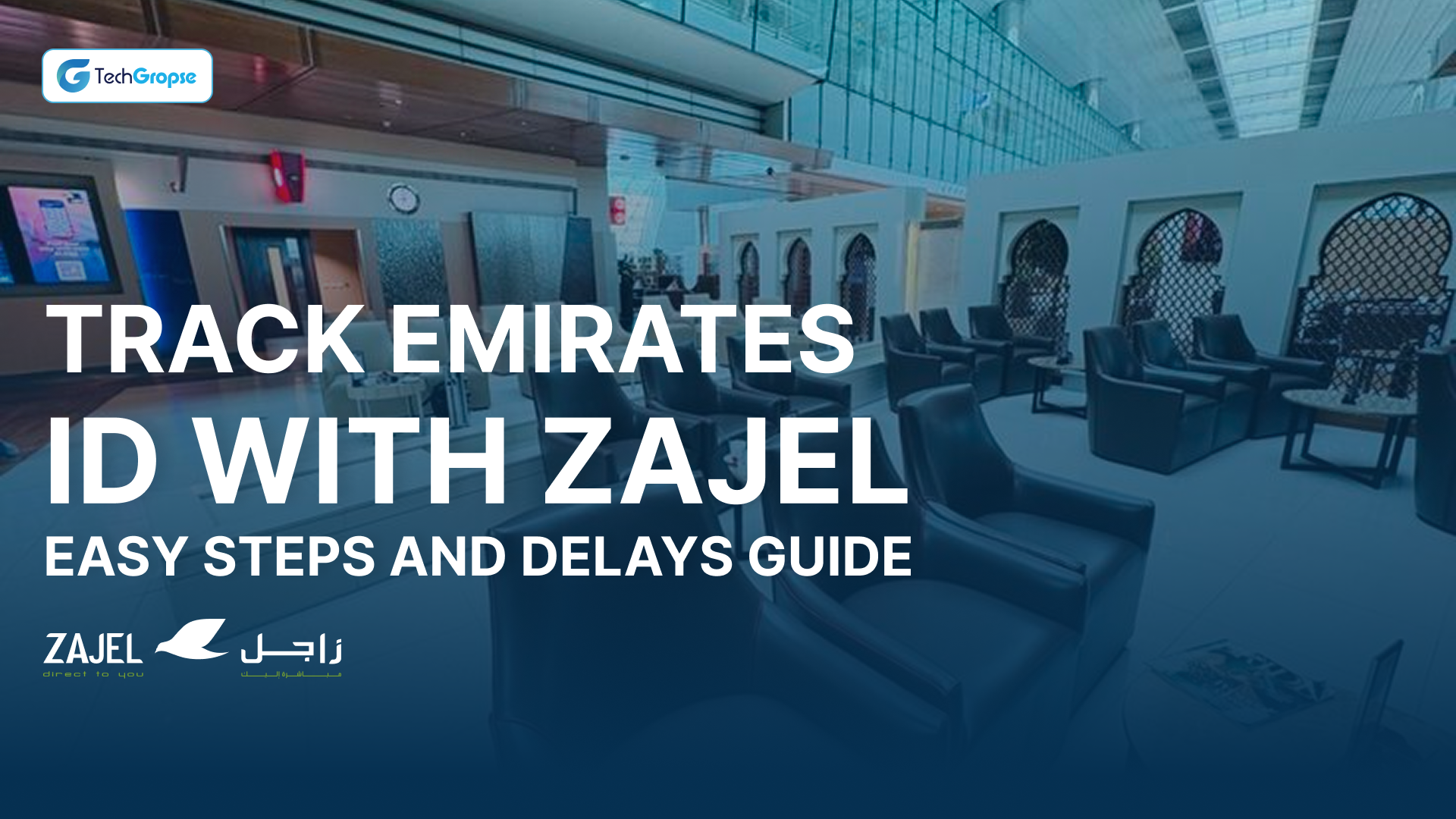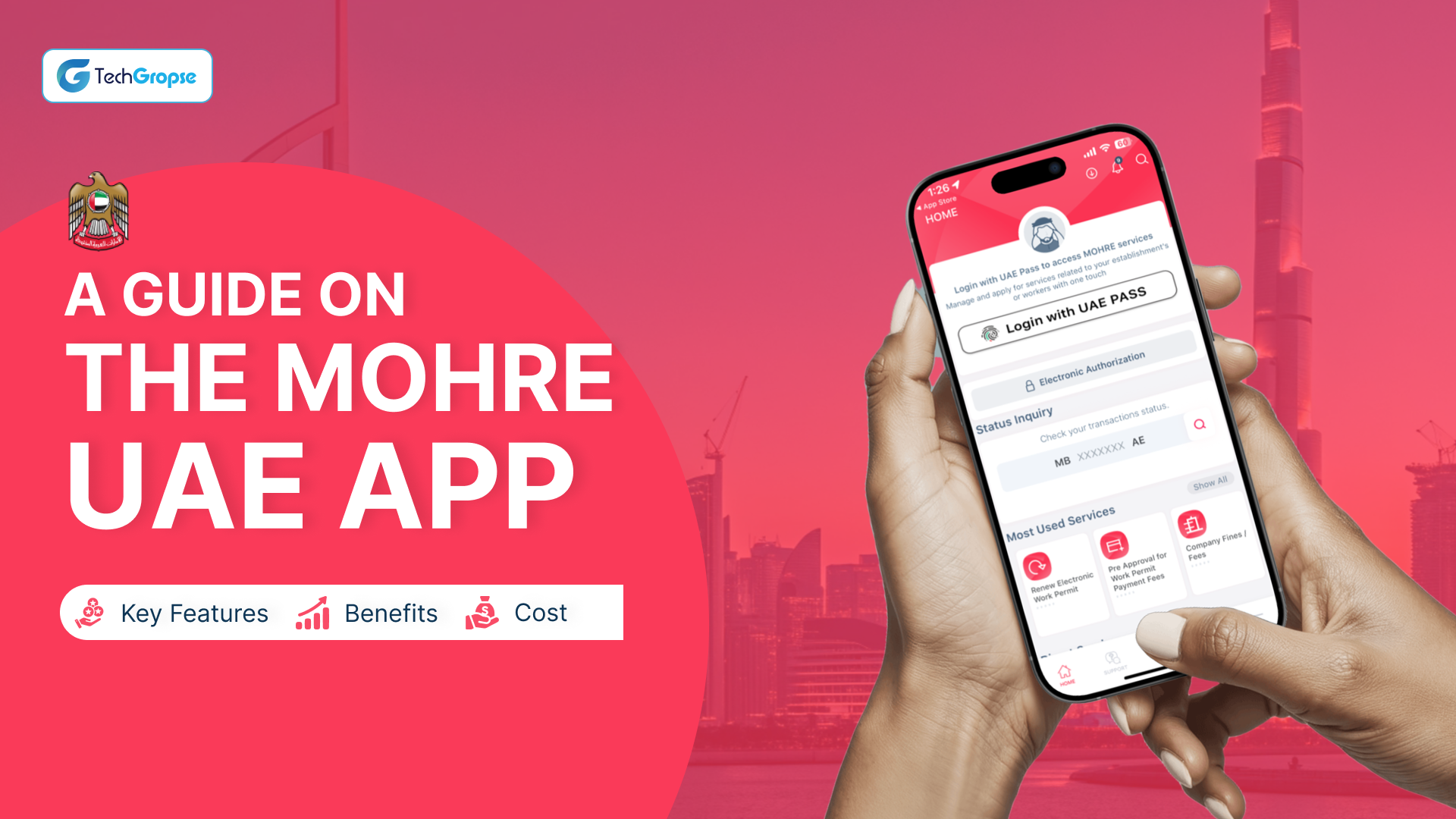With a huge business volume surging down to the remotest demographics, Business Model Canvas Examples are emerging as a solution to both suppressed and widespread traditional business development limitations.
To streamline business modeling, you will require an adaptive tool with a high degree of versatility, integrated visuals, and a holistic perspective on the elemental business approach. Thus, understanding the best Business Model Canvas Examples is very crucial.
In this blog, we will discuss the best Business Model Canvas Examples, how they are transforming modern business strategies, and why BMC is a vital component to functionalize, elevate, and augment routine businesses.
What is a Business Model Canvas?
Business Model Canvas explained: It is a structural roadmap of a new or existing business operation, strategized with the visual chart illustration of elemental business components – Customer Segment, Value Proposition, Channels, Customer Relationship, Revenue Stream, Key Resources, Key Activities, Cost Structure, Key Partner.
So, why is Business Model Canvas required?
Rather than haphazardly operating with an unclear vision, it’s better to make a neat blueprint of the entire business on a single canvas. This will simplify the complex ideas, encourage strategic alignment, identify operational gaps, scale business size, and fast-track innovation.
Most importantly, the business partners, investors, and frontline decision-makers of the project will stay informed of the business intricacies, possible opportunities, and long-term business vision.
But why are Business Model Canvas Examples better than traditional business plan methods?
Because traditional business planning relies on a waterfall development approach and Business Model Canvas Examples are built on an iterative development methodology.
A waterfall development approach, also known as the linear method, is sequential, rigid, and is engraved with underlying problems that emerge later.
Business Model Canvas Examples are agile, focused, holistic, and risk-free. Moreover, the continuous learning and improvement propelled by the AI thrust makes Business Model Canvas a frontline tool for business development.
Know the Competitive Benefits of Business Model Canvas
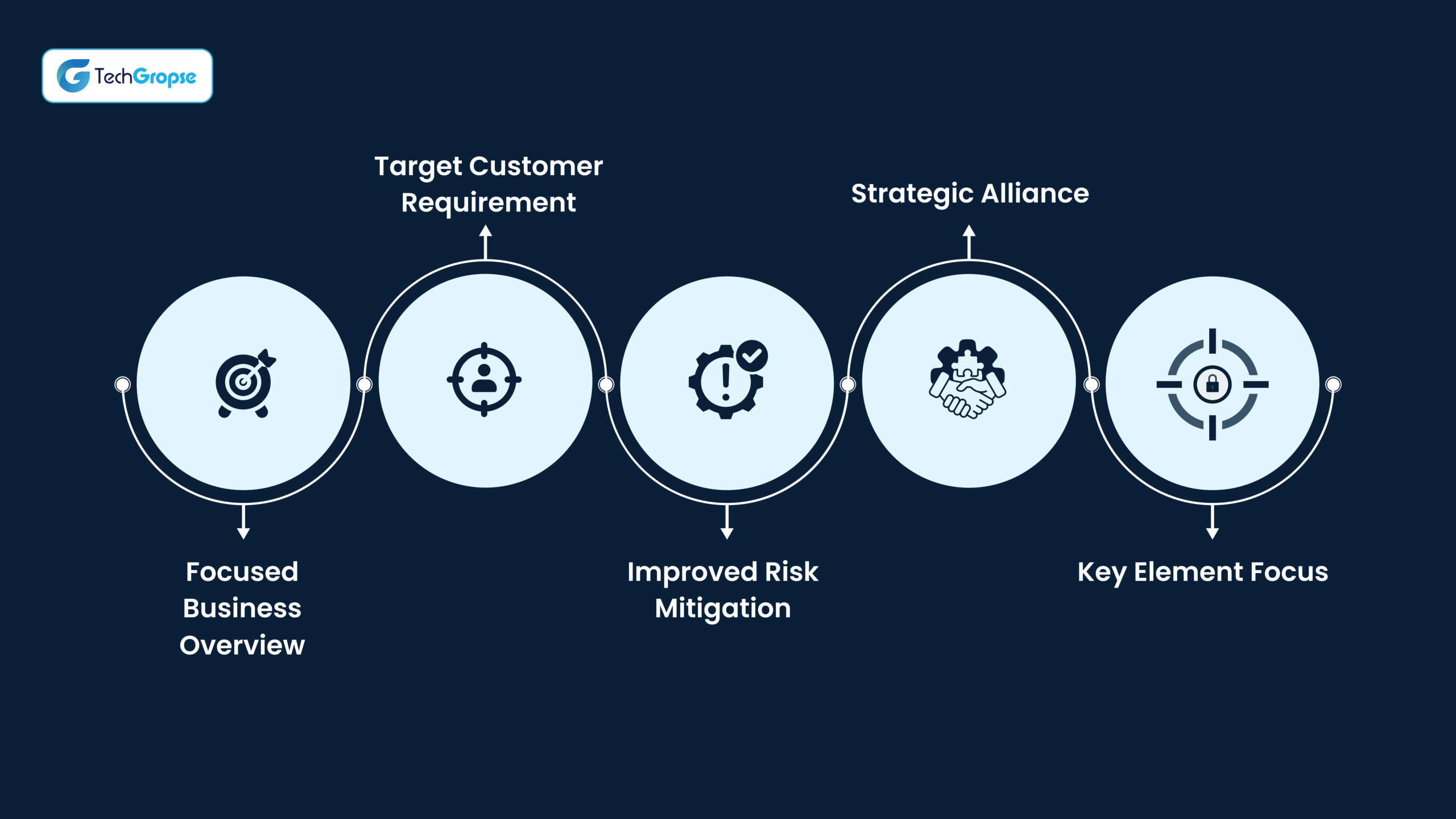
After getting a slight overview of Alexander Osterwalder business model canvas, know the competitive benefits that thrive in its vicinity.
Focused Business Overview
With a clear idea of business overview, products involved, and customer engagement, you get a competitive edge to craft a profitable business with innovative operations and seamless business design.
Target Customer Requirement
The wrong evaluation of consumer needs is the biggest reason for business failure in any market. BMC offers you a concise documentation of targeted customer needs that further helps you build a comprehensive business.
Improved Risk Mitigation
On connecting multiple building blocks of Business Model Canvas, the risk factor is something that becomes clearly visible to you. Eventually, you can take necessary measures to mitigate the risk for your business.
Strategic Alliance
With Business Model Canvas illustrating every area of your business, the investors, stakeholders, development professionals, and marketing forces automatically get on the same page with informed decision-making.
Key Element Focus
Rather than beating around the bush, Business Model Canvas focuses on key elements like market size, demographic volume, operational gaps, and opportunities for SMEs, startups, large enterprises, and conglomerates.
What are the 9 Building Blocks of Business Model Canvas?
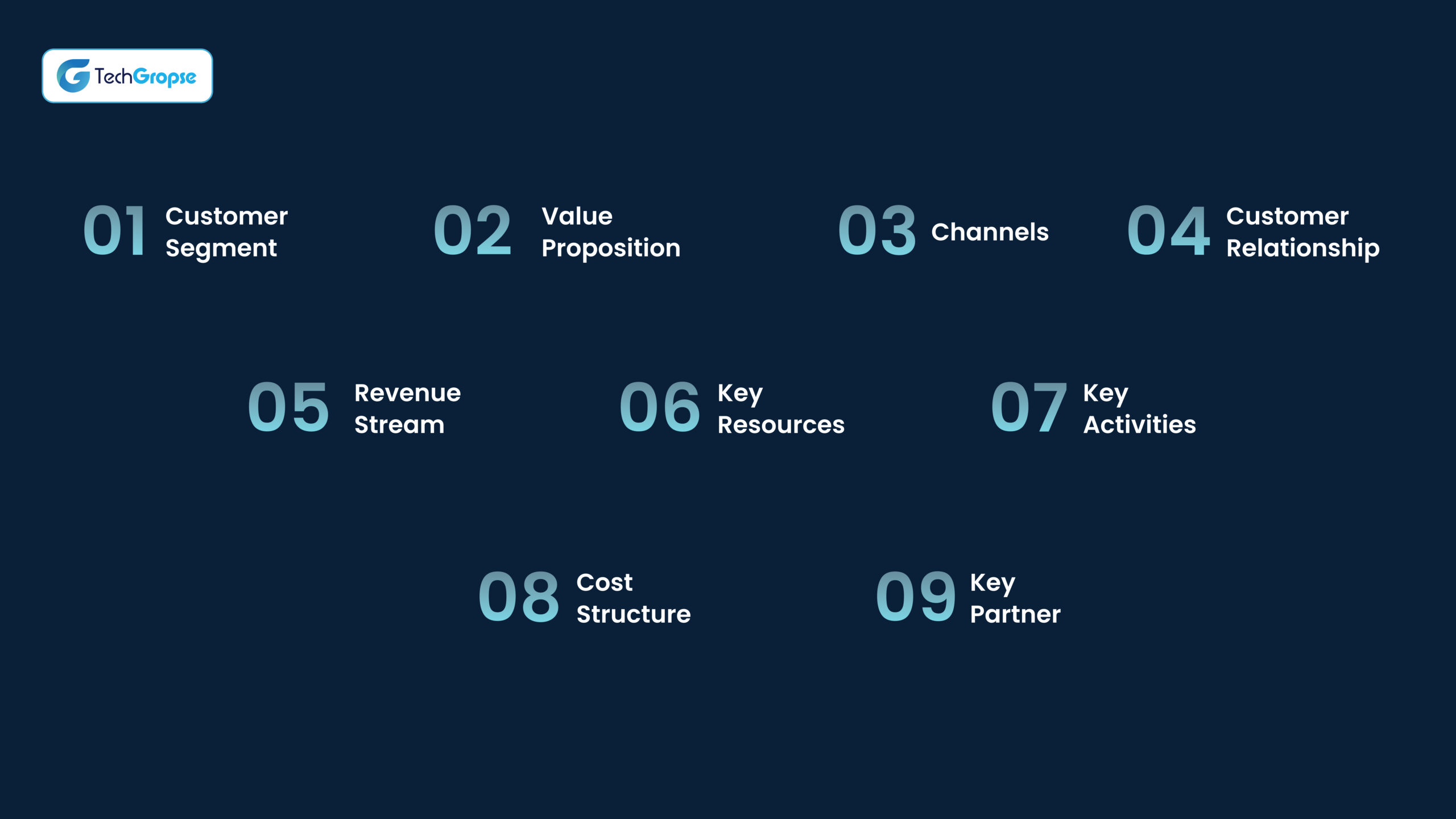
Do you know how to fill business model canvas?
Before filling in the entire Business Model Canvas, you have to bifurcate it with multiple building blocks.
So, what is a building block in a Business Model Canvas?
A building block is a fundamental element or component that forms part of a larger structure or system. In the context of the Business Model Canvas, a building block represents one of the core parts that together define how a business creates, delivers, and captures value.
Essentially, there are 9 building blocks of Business Model Canvas.
Customer Segments of Business Model Canvas
To speak in a nutshell, Consumer Segments of Business Model Canvas is the targeted audience of the respective business. When you are clear about your target consumers, your team is bound to develop the product accordingly. The process involves breaking down the demography, categorizing the market, and jotting down the audience behaviour and preferences as per their requirement.
Value Propositions of Business Model Canvas
Unique Value Proposition of Business Model Canvas is the special virtue that you are offering to the target audience. It could be product features, service engagement model, feasible pricing, or other competitive benefits. A value proposition is an articulated answer to why customers choose you over other competitors in the market.
Channels of Business Model Canvas
Distributed channels of Business Model Canvas are the mode or platform via which you plan to reach the target audiences. The chosen channels can be brick-and-mortar stores, websites, social media platforms, or franchise-based physical stores. The distributed channels also determine the investors and stakeholders that your business will be partnering with.
Customer Relationships of Business Model Canvas
To ensure business sustainability and long-lasting relationships with customers, you have to understand their preferred type of engagement. This involves automated digital relationships, one-to-one personal relationships, self-service relationships, service follow-up relationships, delivery reminder relationships, and so on.
Revenue Stream of Business Model Canvas Examples
Revenue streams are the oxygen cylinders of your business. This simply means how your business makes money. Revenue streams can vary from product selling, service offerings, selling advertising space, and adopting other monetization strategies. The kind of revenue streams that suit your business depends on the audience engagement and demographic preference.
Key Resources of Business Model Canvas
Key Resources are the foundational elements that are required for your business to stay functional. The resources can be tangible or intangible, paid or owned, essential or superficial. These resources are often physical assets, machinery, technologies, infrastructure, contracts, human capital, or intellectual property serving the critical forte of the business.
Key Activities of Business Model Canvas
Major Activities are the essential functions that are required to sustain the continuity of your business. The key activities might involve cleaning up the office space or distributing pamphlets to customers, or executing a special one-day offer as a unique value creation for your business brand. Thus, key activities can be routine operational tasks or unique business functions.
Cost Structure of Business Model Canvas
This building block deals with the budget part, encapsulating rental costs, employee salaries, asset purchases, buying supplies, and managing other financial campaigns. You not only need to track the investment & expenses, but also structure the fixed and variable costs of the business. A refined Business Model Canvas offers you a detailed cost structure.
Key Partners of Business Model Canvas Examples
Key partner refers to the strategic partnership & market positioning for the success of the business. The collaboration planning is strategically fostered to access new marketing resources, amplify core competencies, identify synergies, and ensure end-to-end mutual benefits for partners at every end.
Best Real-World Business Model Canvas Examples in 2025
Netflix
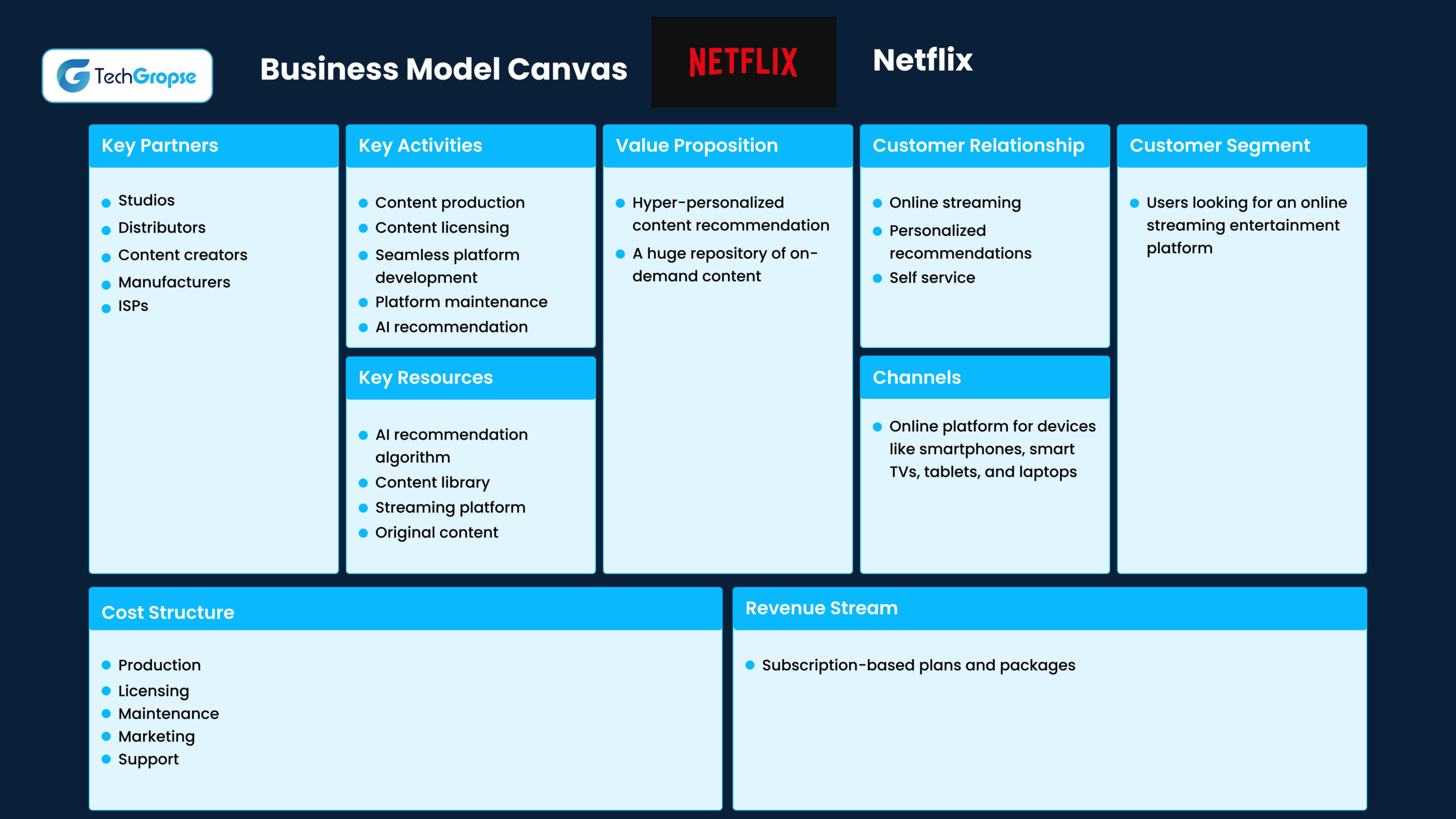
Year Established
1997
CEO
Ted Sarandos and Greg Peters (Co-CEOs)
Headquarter
Los Gatos, California, USA
Industry
Entertainment, Streaming Media
Stock Ticker
NFLX
Netflix Business Model Canvas
Customer Segment
- Users looking for an online streaming entertainment platform
Value Proposition
- Hyper-personalized content recommendation
- A huge repository of on-demand content
Channels
Online platform for devices like smartphones, smart TVs, tablets, and laptops
Customer Relationship
- Online streaming
- Personalized recommendations
- Self service
Revenue Stream
- Subscription-based plans and packages
Key Resources
- AI recommendation algorithm
- Content library
- Streaming platform
- Original content
Key Activities
- Content production
- Content licensing
- Seamless platform development
- Platform maintenance
- AI recommendation
Key Partners
- Studios
- Distributors
- Content creators
- Manufacturers
- ISPs
Cost Structure
- Production
- Licensing
- Maintenance
- Marketing
- Support
NVidia

Year Established
1993
CEO
Jensen Huang (Co-founder & CEO)
Headquarter
Santa Clara, California, USA
Industry
Semiconductors, Artificial Intelligence, Computer Hardware
Stock Ticker
NVDA
NVidia Business Model Canvas
Customer Segment
- Giant enterprises looking for AI solutions for data centers and large-scale business apps
- Small & medium-sized companies looking for AI solutions
- Freelancers and small development teams looking for AI solutions
Value Proposition
- High-performing AI solutions for scalable hardware, software, and cloud support
Channels
- Direct sales with small and large companies
- Network partnering with third-party resellers & distributors
Customer Relationship
- Strategic partnership with tech enterprises and bigger brands
- Community engagement with open source AI tools
Revenue Stream
- Product sales from AI hardware and GPUs
- Licensing and intellectual property revenue
- AI platforms, software solutions, service & support revenues
Key Resources
- Intellectual property with AI and GPU design
Key Activities
- R&D in AI and GPUs
- Strategic collaboration for market expansion
Key Partners
- Manufacturing partnerships with TSMC
- Engagement with universities, academies, and research institutes
Cost Structure
- Investment in R&D for technical expansion
- Manufacturing investment for hardware and advanced chips
- Investment for better marketing reach
Airbnb
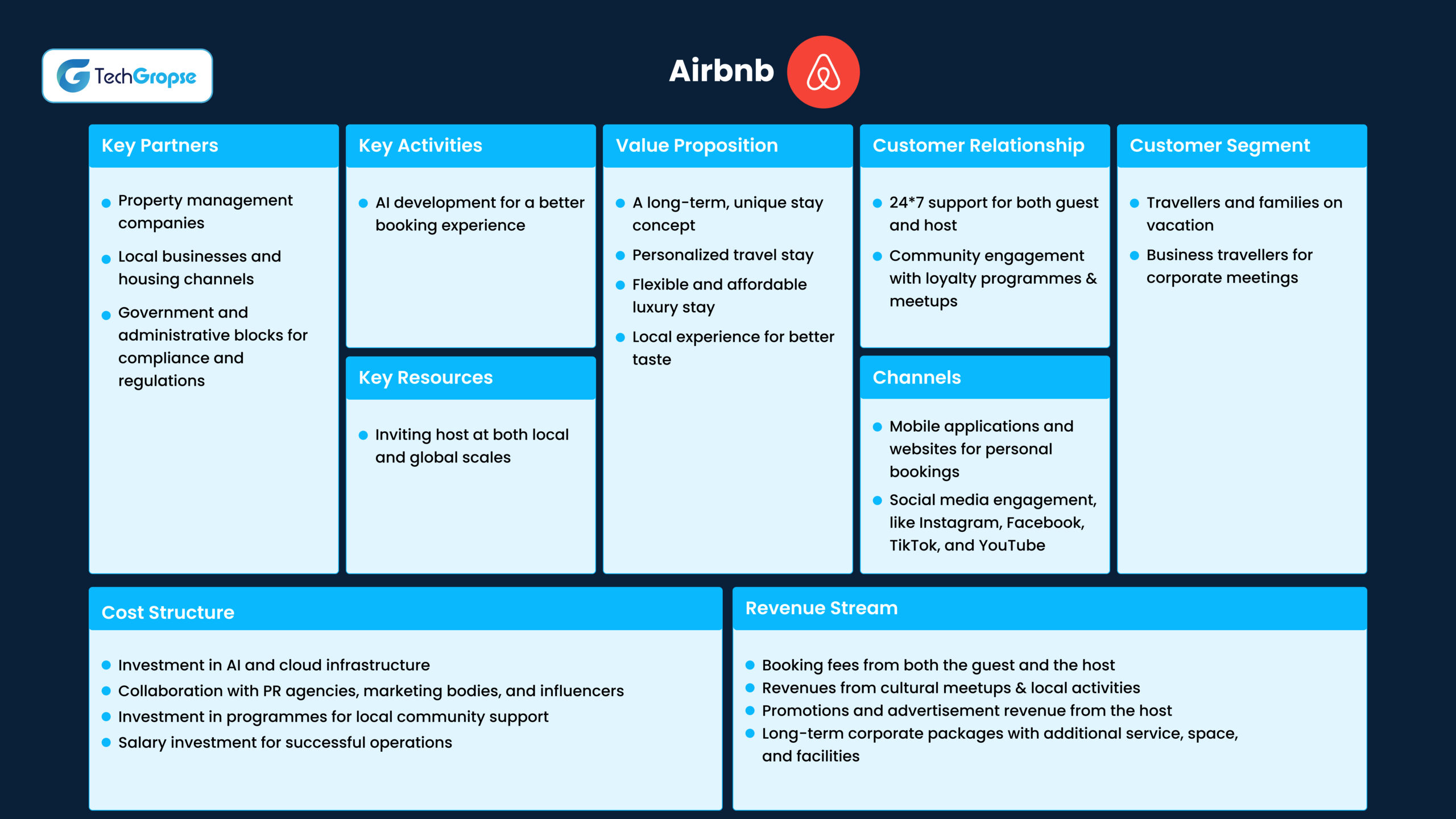
Year Established
2008
CEO
Brian Chesky (Co-founder & CEO)
Headquarter
San Francisco, California, USA
Industry
Hospitality, Travel, Online Marketplace
Stock Ticker
ABNB
Airbnb Business Model Canvas
Customer Segment
- Travellers and families on vacation
- Business travellers for corporate meetings
Value Proposition
- A long-term, unique stay concept
- Personalized travel stay
- Flexible and affordable luxury stay
- Local experience for better taste
Channels
- Mobile applications and websites for personal bookings
- Social media engagement, like Instagram, Facebook, TikTok, and YouTube
Customer Relationship
- 24*7 support for both guest and host
- Community engagement with loyalty programmes & meetups
Revenue Stream
- Booking fees from both the guest and the host
- Revenues from cultural meetups & local activities
- Promotions and advertisement revenue from the host
- Long-term corporate packages with additional service, space, and facilities
Key Resources
- Inviting host at both local and global scales
Key Activities
- AI development for a better booking experience
Key Partners
- Property management companies
- Local businesses and housing channels
- Government and administrative blocks for compliance and regulations
Cost Structure
- Investment in AI and cloud infrastructure
- Collaboration with PR agencies, marketing bodies, and influencers
- Investment in programmes for local community support
- Salary investment for successful operations
Microsoft
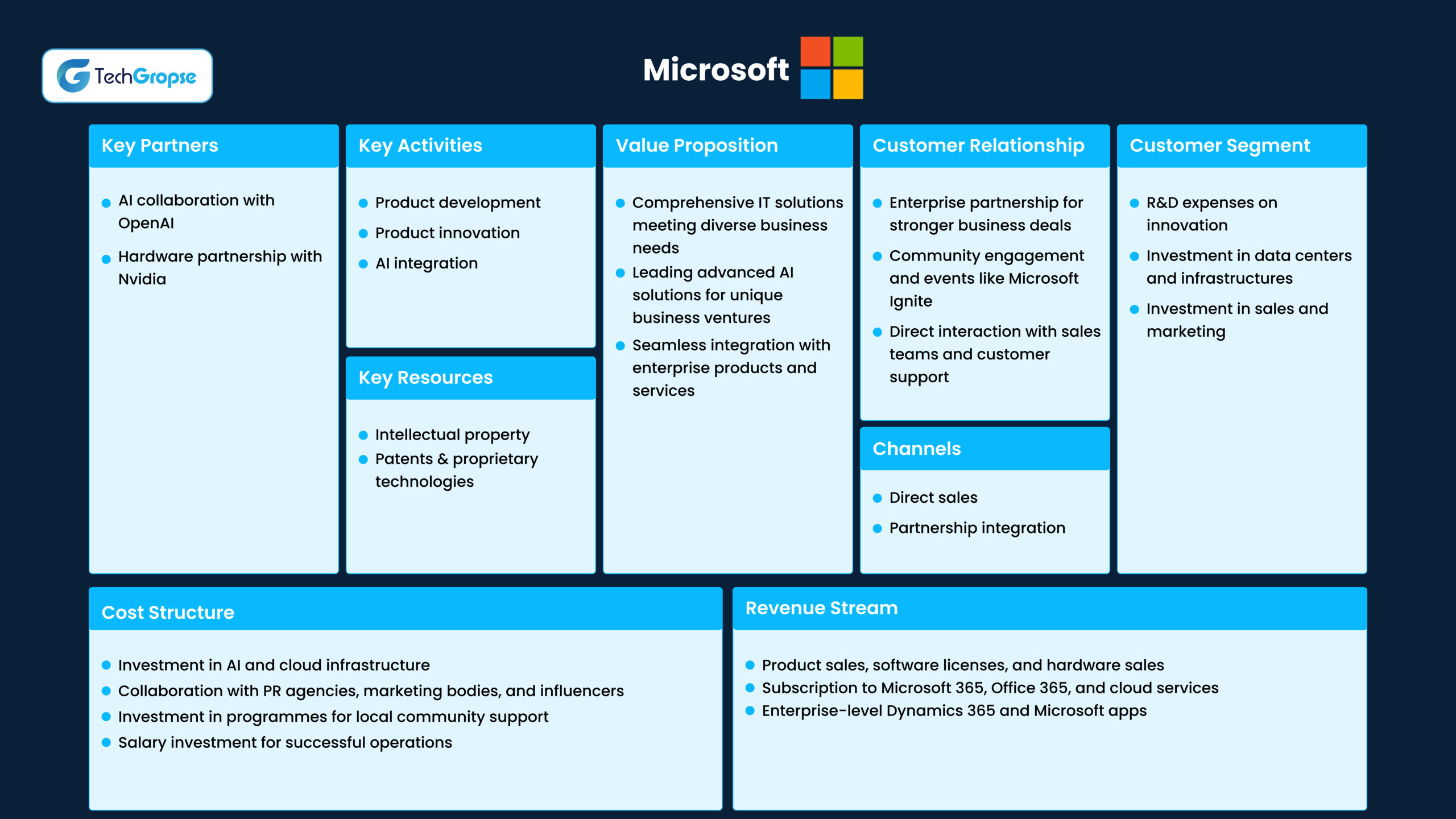
Year Established
1975
CEO
Satya Nadella
Headquarter
Redmond, Washington, USA
Industry
Technology, Software, Cloud Computing
Stock Ticker
MSFT
Microsoft Business Model Canvas
Customer Segment
- Small, mid-size, and large companies looking for feasible IT solutions
- Individuals using a computing device and software boutique
Value Proposition
- Comprehensive IT solutions meeting diverse business needs
- Leading advanced AI solutions for unique business ventures
- Seamless integration with enterprise products and services
Channels
- Direct sales
- Partnership integration
Customer Relationship
- Enterprise partnership for stronger business deals
- Community engagement and events like Microsoft Ignite
- Direct interaction with sales teams and customer support
Revenue Stream
- Product sales, software licenses, and hardware sales
- Subscription to Microsoft 365, Office 365, and cloud services
- Enterprise-level Dynamics 365 and Microsoft apps
Key Resources
- Intellectual property
- Patents & proprietary technologies
Key Activities
- Product development
- Product innovation
- AI integration
Key Partners
- AI collaboration with OpenAI
- Hardware partnership with Nvidia
Cost Structure
- R&D expenses on innovation
- Investment in data centers and infrastructures
- Investment in sales and marketing
Uber

Year Established
2009
CEO
Dara Khosrowshahi
Headquarter
San Francisco, California, USA
Industry
Technology, Transportation, Ride-Hailing, Delivery Services
Stock Ticker
UBER
Uber Business Model Canvas
Customer Segment
- An individual looking for convenient door-to-door transport
- Enterprise is looking for logistics solutions & Uber Freight
- Restaurants and retail brands using Uber Eats
Value Proposition
- Convenience & accessibility to fast and smarter transport
- Easy-to-use application with a seamless interface and reliable data handling
- Multiple services like ride-hailing, food delivery, and freight
- Feasible pricing and offers for all range of customers
Channels
- Mobile and web applications
Customer Relationship
- Comprehensive customer relationship with a separate user and driver support panel.
Revenue Stream
- Ride booking charges, service fees, and offers
Key Resources
- Technology infrastructure and a large pool of drivers
Key Activities
- Platform development and automated vehicle integration
Key Partners
- Drivers
- Courier brands
- Retailers & restaurants
- Autonomous vehicle companies
Cost Structure
- Platform maintenance cost
- Driver service fees
- Research & development cost
How TechGropse Leverages Modern Technologies to Augment Business Model Canvas?
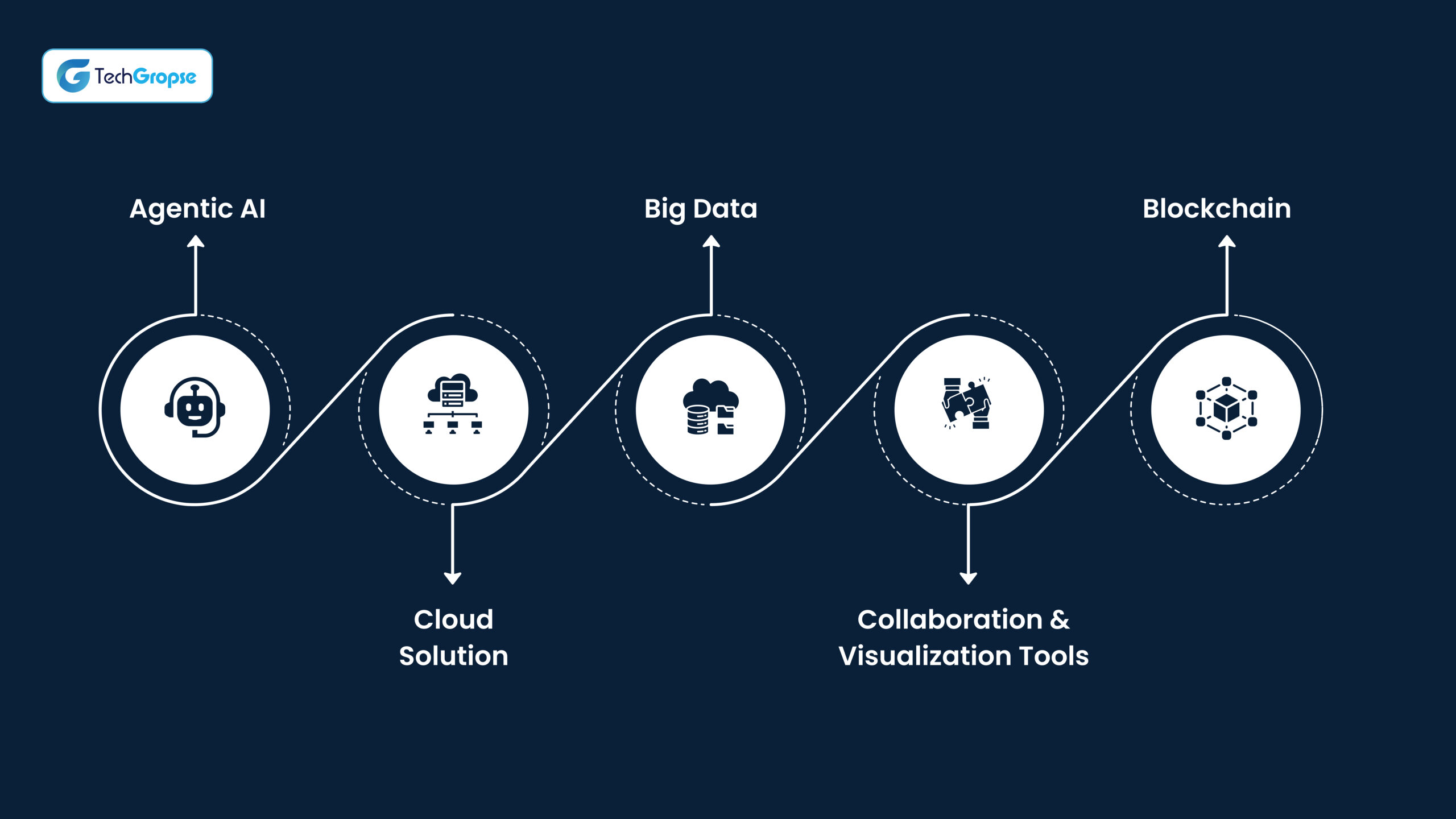
TechGropse is a leading mobile app development company with 10+ years of experience in 3000+ projects across 25+ locations across the globe. Having worked with 450+ clients, we have an around 92% retention rate in varied industries and lines of business.
So, let’s explore the technologies that we offer to augment your Business Model Canvas in 2025.
Agentic AI
We leverage Artificial Intelligence technology to understand the customer needs, latest marketing trends, tentative profit ratio, and decision-making virtues for a high-end Business Model Canvas.
Cloud Solution
Our team helps in shifting from legacy storage to a cloud solution for cultivating scalable deliveries, remote collaboration, and real-time updates across your Business Model Canvas.
Big Data
Harness the power of data analytics platforms like Power BI or Tableau to fetch insights into performance, revenue streams, and customer preferences, refining each building block with relevant & precise datasets.
Collaboration & Visualization Tools
Tools like Miro, Canva, and Lucidchart digitize the Business Model Canvas, enabling teams to co-create and visualize ideas interactively. We assist in integrating such data visualization tools in your BMC solution.
Blockchain
When it comes to creating a transparent ecosystem of information sharing, Blockchain is undoubtedly the best in the league. Our skilled engineers integrate blockchain technology in BMC for streamlined model adjustment & progression awareness.
FAQs
A Business Model Canvas (BMC) is a structured wireframe of your business operations, drafted with 9 building blocks, with each block holding the essential factors impacting the success and sustainability of your business.
Business Model Canvas (BMC) gives you a rough idea of the operational layout, eventually elevating the customer engagement, product sales, and ROI of your business.
Customer Segment, Value Proposition, Channels, Customer Relationship, Revenue Stream, Key Resources, Key Activities, Cost Structure, and Key Partners are the major building blocks of the Business Model Canvas.
Alexander Osterwalder developed the first Business Model Canvas (BMC) in the year 2005.
The unique selling point of your business’s products and services is called the Value Proposition of the Business Model Canvas.
Customer Segments of a Business Model Canvas are basically the targeted group of audiences at the individual, organizational, demographical, or behavioural level, fostering maximum revenue for the business.
The areas of essential investments that the business cannot run without encompass the overall cost structure of the Business Model Canvas.
Yes, NGOs and non-profit organizations can also utilize the Business Model Canvas for clarity in mission, strong fundraising integration, and social engagement at an impactful level.
Yes. For better development and operational execution, startups and small businesses can also use Business Model Canvas.
Industries like healthcare, e-commerce, FMCG, Information Technology, ride-hailing, and hotels & tourism benefit the most from Business Model Canvas.




